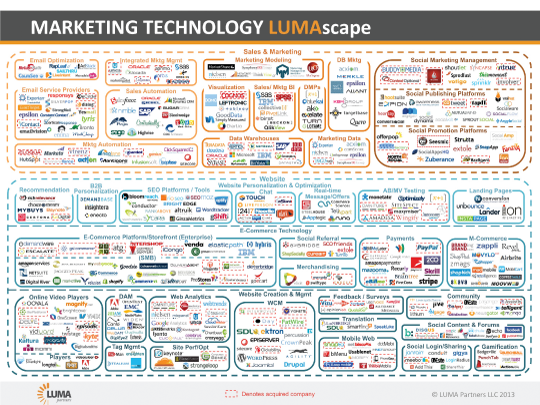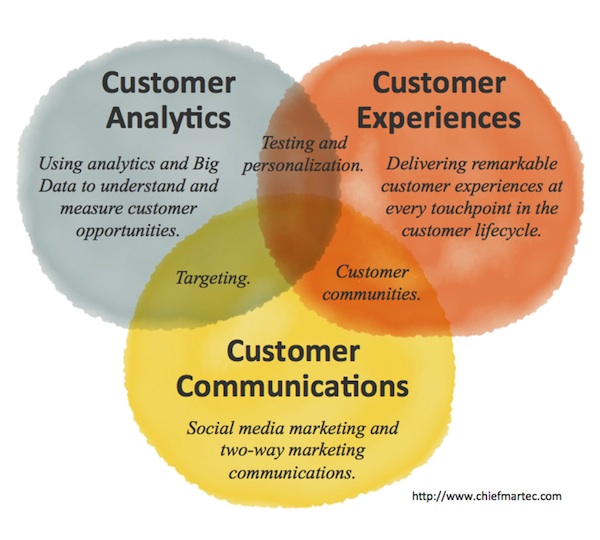It’s no secret that marketing continues to increase spending on technology, which raises the question of which technologies they are spending on. The answer is “lots” – the marketing technology landscape has become much larger, more varied, and more complex. One sign is the evolution of some web content management systems to solutions for web experience management, web engagement management, digital experience management, etc., which involves integrating with marketing automation, predictive analytics, social and many other marketing tools and back end systems.
Not all this is new. In 1999 more advanced businesses were already integrating e-commerce, web analytics, personalization, and marketing automation, but it was much harder then and there were far fewer options. I hesitate to say it is easier now, but it is in many ways – the technology is much better and we have much more experience with it. What is certainly not easier is navigating the technology landscape which is extremely dynamic, and contains categories with too many vendors. Both CMOs and CIOs need a marketing technologist function in some form, and would certainly benefit from input from analysts, and a <plug> vendor and analyst neutral conference </plug>. The illustration below may be scary, but should be very useful. Thanks to Scott Brinker for first pointing this landscape out. Scott also has his own similar graphic.



